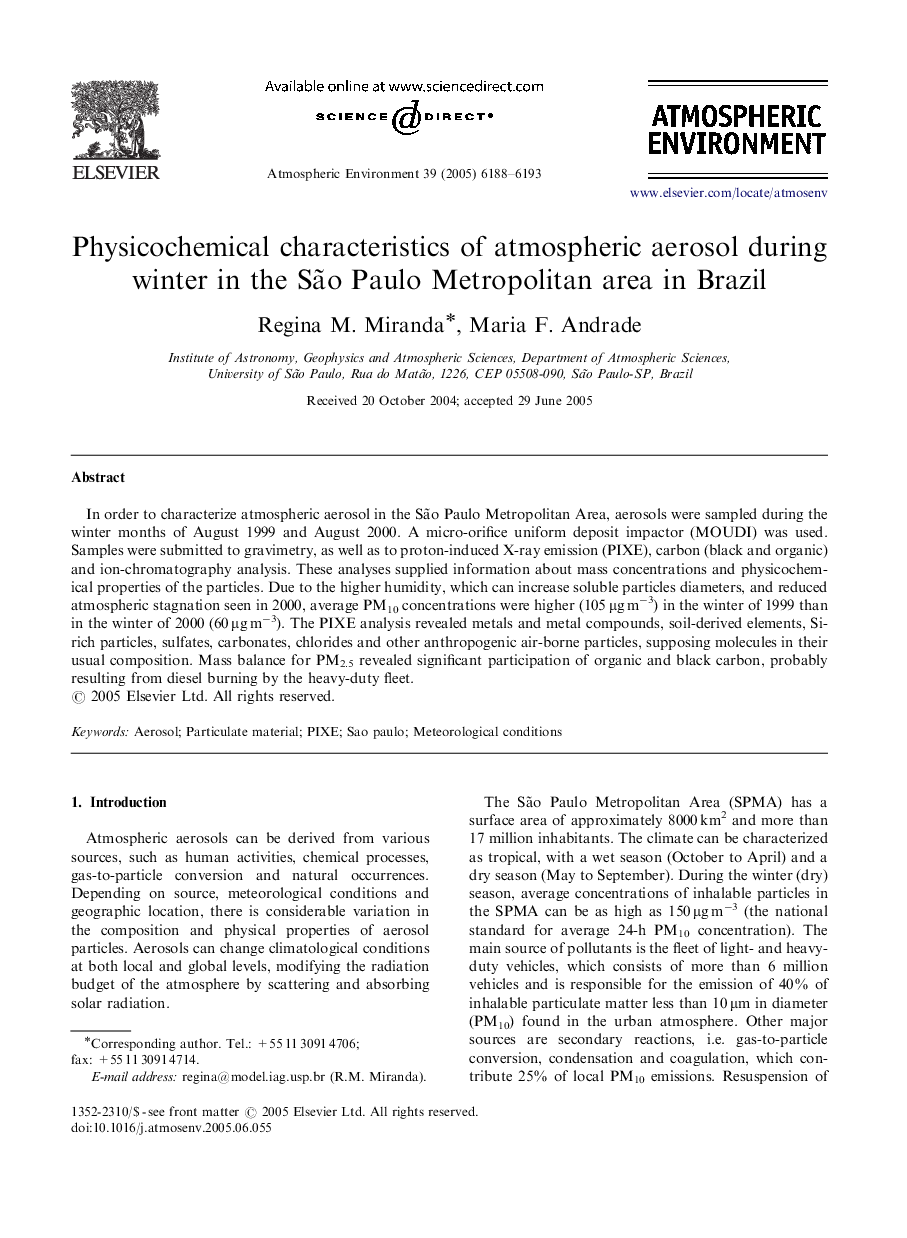| Article ID | Journal | Published Year | Pages | File Type |
|---|---|---|---|---|
| 4444633 | Atmospheric Environment | 2005 | 6 Pages |
In order to characterize atmospheric aerosol in the São Paulo Metropolitan Area, aerosols were sampled during the winter months of August 1999 and August 2000. A micro-orifice uniform deposit impactor (MOUDI) was used. Samples were submitted to gravimetry, as well as to proton-induced X-ray emission (PIXE), carbon (black and organic) and ion-chromatography analysis. These analyses supplied information about mass concentrations and physicochemical properties of the particles. Due to the higher humidity, which can increase soluble particles diameters, and reduced atmospheric stagnation seen in 2000, average PM10 concentrations were higher (105 μg m−3) in the winter of 1999 than in the winter of 2000 (60 μg m−3). The PIXE analysis revealed metals and metal compounds, soil-derived elements, Si-rich particles, sulfates, carbonates, chlorides and other anthropogenic air-borne particles, supposing molecules in their usual composition. Mass balance for PM2.5 revealed significant participation of organic and black carbon, probably resulting from diesel burning by the heavy-duty fleet.
